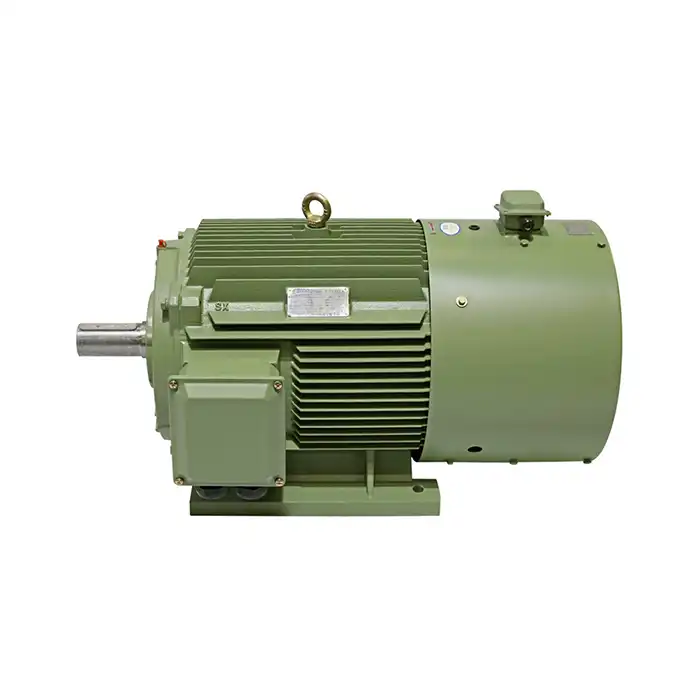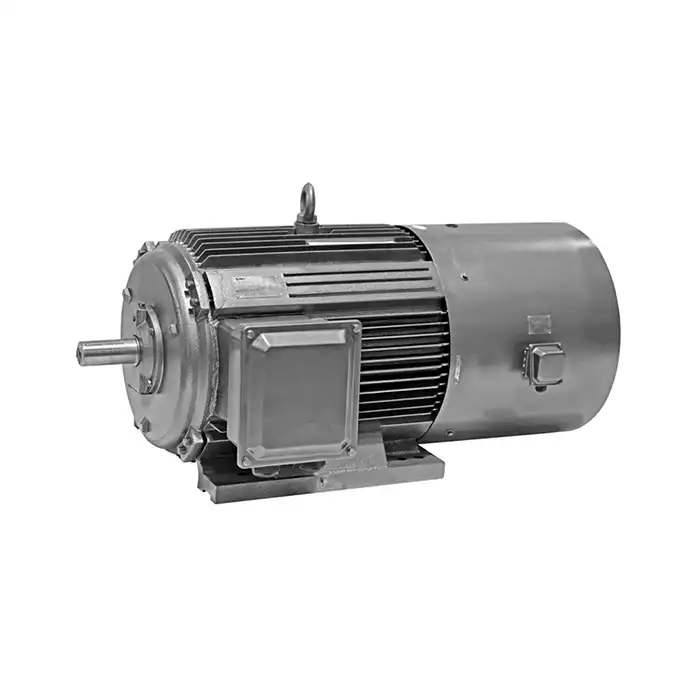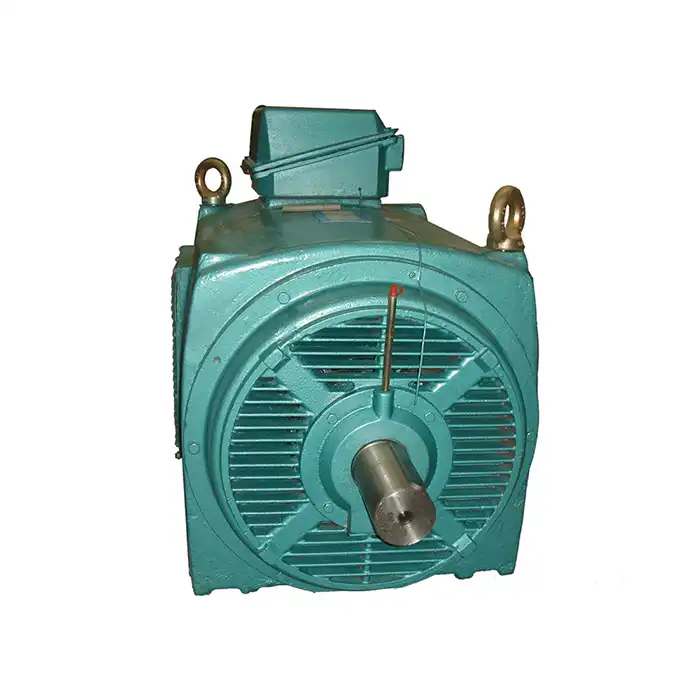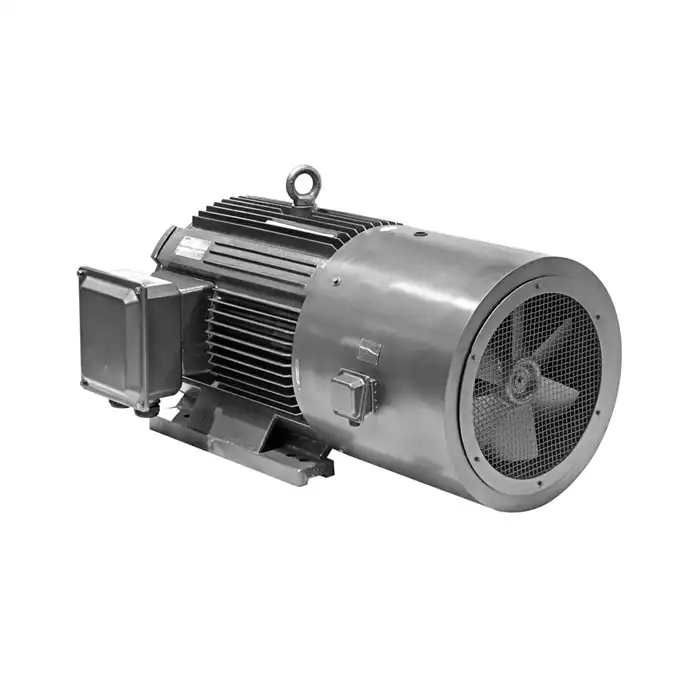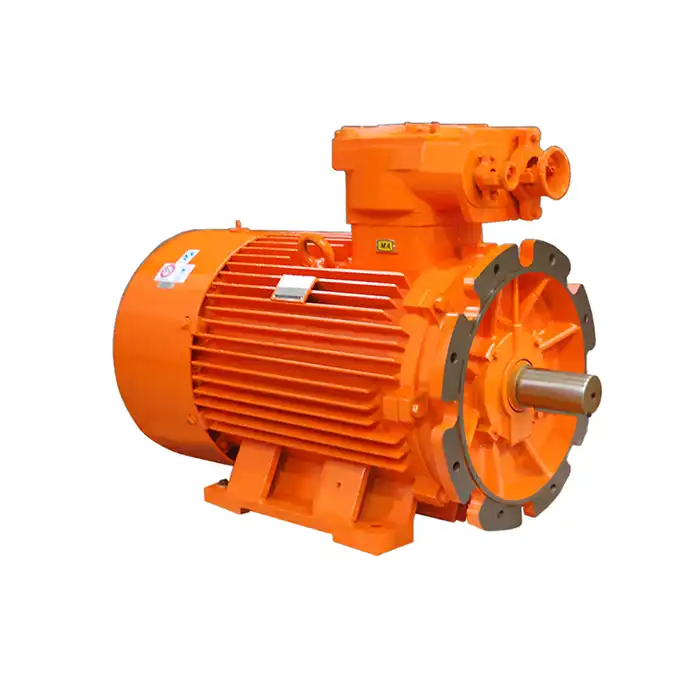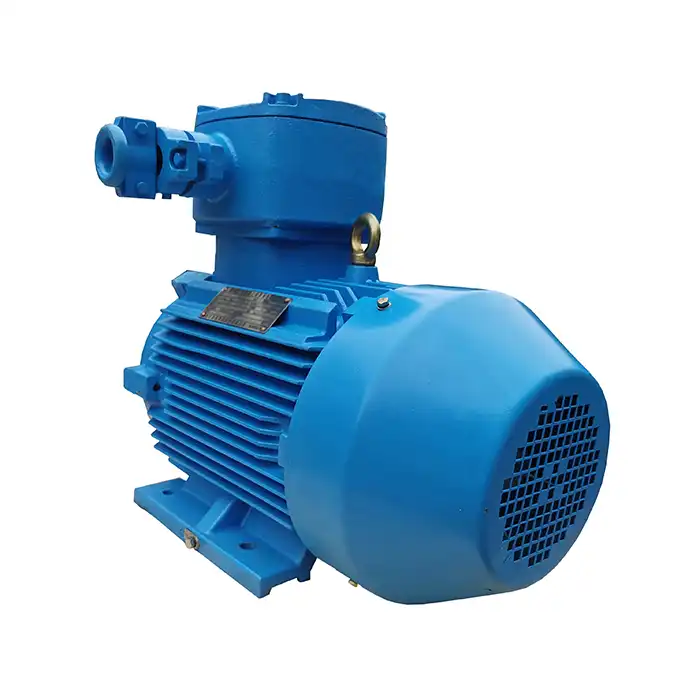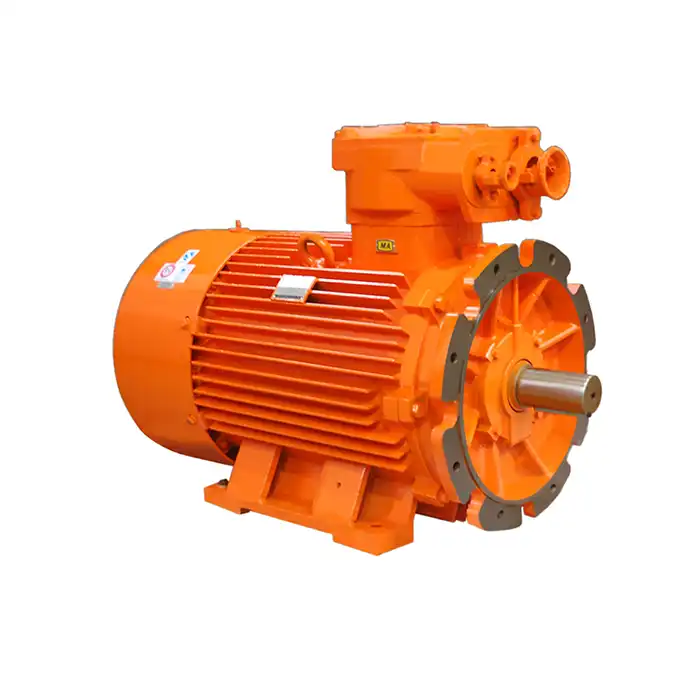How do IE 5 motors contribute to reducing energy consumption?
In today's world, where energy efficiency is paramount, IE 5 motors are making waves in the industrial sector. These premium efficiency motors are changing the way we think about energy consumption in various applications. Let's delve into how these motors are contributing to significant energy savings and helping businesses reduce their carbon footprint.
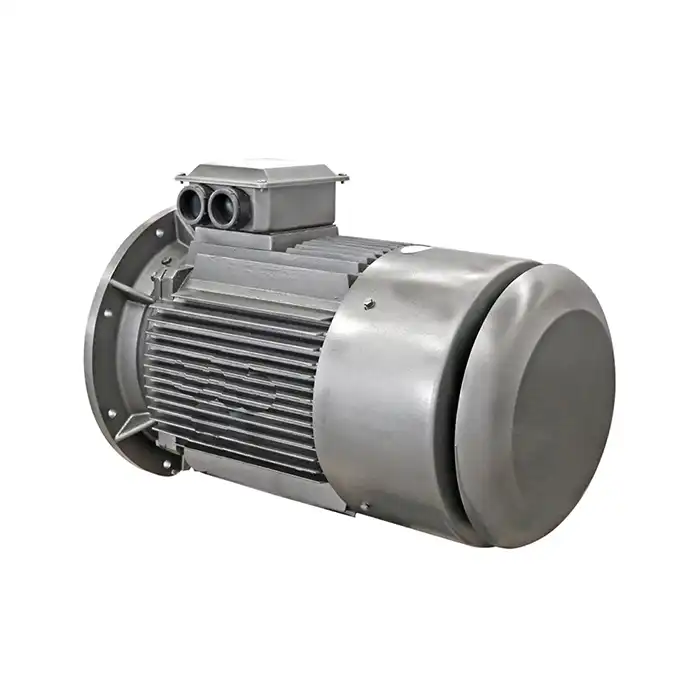
YE5 Product Specifications:
| Power Range | 0.75 kW to 1000 kW |
| Voltage | 380-415V (50Hz) / 440-480V (60Hz) |
| Speed | 500 to 3000 rpm |
| Efficiency | Up to 96.5% |
| Frame Size | 80 to 450 |
| Protection Class | IP55 (higher available upon request) |
| Insulation Class | F (Class H optional) |
IE 5 motor technology: How does it minimize energy losses?
IE 5 motors represent the significant advancement of electric motor technology, offering high efficiency in converting electrical energy into mechanical power. These motors are designed with advanced materials and innovative construction techniques that significantly reduce energy losses.
One of the key features of IE 5 motors is their use of high-grade electrical steel in the stator and rotor cores. This material has superior magnetic properties, which helps to minimize core losses. The laminations in these motors are also thinner than those found in lower efficiency classes, further reducing eddy current losses.
Another crucial aspect of IE 5 motor design is the optimization of the air gap between the stator and rotor. By precisely controlling this gap, manufacturers can reduce magnetic reluctance, leading to improved efficiency. The rotor design in IE 5 motors often incorporates advanced technologies like copper die-cast rotors or synchronous reluctance designs, which significantly reduce rotor losses.
The winding design in IE 5 motors is also highly optimized. Manufacturers use high-quality copper conductors and employ advanced winding techniques to maximize the active material utilization. This results in lower resistance losses and improved overall efficiency.
Bearing technology plays a vital role in IE 5 motor efficiency as well. These motors often feature low-friction bearings, sometimes with specialized lubricants, to minimize mechanical losses. Some designs even incorporate ceramic bearings for ultimate efficiency in high-speed applications.
By combining these advanced technologies, IE 5 motors can achieve efficiency levels of up to 96.5%, significantly higher than their lower-class counterparts. This translates to substantial energy savings over the motor's lifetime, especially in applications with high running hours.
The role of IE 5 motors in meeting global energy regulations
As governments worldwide tighten energy efficiency regulations, IE 5 motors are becoming increasingly important in helping industries comply with these standards. These motors not only meet but often exceed the most stringent global energy efficiency requirements.
The International Electrotechnical Commission (IEC) has defined the IE5 efficiency class as the highest standard for electric motors. This classification is part of a global effort to reduce energy consumption and greenhouse gas emissions in the industrial sector, which accounts for a significant portion of worldwide energy use.
In the European Union, the Ecodesign Directive sets minimum efficiency requirements for electric motors. While IE3 is currently the minimum standard for most motor sizes, there's a clear trend towards higher efficiency classes. IE 5 motors are well-positioned to meet future regulatory requirements, making them a future-proof choice for businesses.
In the United States, the Department of Energy (DOE) has established similar efficiency standards. While the current regulations align more closely with the IE3 class, there's growing interest in ultra-premium efficiency motors like IE5. These motors can help businesses exceed current standards and prepare for potential future regulations.
Many other countries, including China, Brazil, and Australia, have also implemented or are in the process of implementing similar energy efficiency standards for electric motors. By adopting IE 5 motors, businesses can ensure compliance with these regulations and potentially avoid costly upgrades in the future.
Moreover, IE 5 motors align perfectly with global initiatives to combat climate change. As countries strive to meet their commitments under agreements like the Paris Accord, industrial energy efficiency will play a crucial role. IE 5 motors represent a tangible way for businesses to contribute to these efforts while also benefiting from reduced energy costs.
It's worth noting that the energy savings provided by IE 5 motors can also help businesses qualify for various energy efficiency incentives and rebates offered by governments and utilities. These financial incentives can further offset the initial investment in high-efficiency motor technology.
Reduced heat dissipation in IE 5 motors: How does it help?
One of the less obvious but equally important benefits of IE 5 motors is their reduced heat dissipation. This characteristic not only contributes to energy savings but also offers several other advantages that can significantly impact overall system performance and longevity.
In electric motors, energy losses primarily manifest as heat. Lower efficiency motors convert more of the input electrical energy into heat rather than useful mechanical work. IE 5 motors, with their superior efficiency, generate significantly less heat during operation.
This reduced heat generation has several positive implications:
- Extended Motor Life: Lower operating temperatures reduce thermal stress on motor components, particularly the insulation system. This can significantly extend the motor's lifespan, reducing the frequency of replacements and associated downtime.
- Improved Reliability: Cooler operation reduces the risk of premature bearing failures and other heat-related issues, leading to improved overall reliability and reduced maintenance costs.
- Enhanced Performance in Harsh Environments: IE 5 motors are better suited for operation in high ambient temperature environments or in applications where cooling is limited. Their inherently cooler operation provides a larger thermal margin, ensuring stable performance under challenging conditions.
- Reduced Cooling Requirements: The lower heat output of IE 5 motors can reduce or eliminate the need for external cooling systems in some applications. This can lead to simpler system designs and further energy savings.
- Improved System Efficiency: In many industrial applications, the heat generated by motors contributes to the overall heat load that must be managed by HVAC systems. By reducing this heat load, IE 5 motors can contribute to improved efficiency of the entire facility.
The reduced heat dissipation of IE 5 motors also opens up new possibilities for motor design and application. For instance, it allows for more compact motor designs without compromising on performance or reliability. This can be particularly beneficial in applications where space is at a premium.
In variable speed applications, the superior efficiency of IE 5 motors across a wide speed range becomes even more apparent. The reduced losses mean that these motors can maintain high efficiency even at lower speeds, where traditional motors often suffer from decreased efficiency and increased heating.
It's important to note that while IE 5 motors generate less heat, proper installation and maintenance are still crucial. Ensuring adequate ventilation and following manufacturer guidelines for installation and operation will help maximize the benefits of these high-efficiency motors.
The combination of energy savings and reduced heat dissipation makes IE 5 motors an excellent choice for businesses looking to optimize their operations. These motors not only contribute to reduced energy consumption but also offer a host of secondary benefits that can improve overall system performance and reliability.
Conclusion
For businesses across various industries, from manufacturing and process control to HVAC and renewable energy, adopting IE 5 motors can lead to substantial energy savings, improved system reliability, and a reduced carbon footprint. As energy costs continue to rise and environmental regulations become more stringent, the benefits of IE 5 motors will only become more pronounced.
If you're looking to optimize your operations, reduce energy costs, and future-proof your business against evolving energy efficiency standards, it's time to consider upgrading to IE 5 motors. Shaanxi Qihe Xicheng Electromechanical Equipment Co.,Ltd. is at the forefront of this technology, offering high-quality IE 5 motors designed to meet the diverse needs of modern industry.
Our team of experts is ready to help you find the perfect IE 5 motor solution for your specific application, whether you're in industrial automation, HVAC, energy and utilities, or other specialized fields. We're committed to providing not just products, but comprehensive power equipment solutions that deliver high energy efficiency, low energy consumption, and stable power.
Don't let energy inefficiency hold your business back. Take the first step towards a more efficient, sustainable future. Contact us today at xcmotors@163.com to learn more about our IE 5 motors and how they can transform your operations. Let's work together to reduce energy consumption and build a greener future for industry.
References
- International Electrotechnical Commission. (2022). "IEC 60034-30-2: Rotating electrical machines - Part 30-2: Efficiency classes of variable speed AC motors (IE-code)."
- European Commission. (2021). "Commission Regulation (EU) 2019/1781 on ecodesign requirements for electric motors and variable speed drives."
- U.S. Department of Energy. (2023). "Energy Conservation Program: Energy Conservation Standards for Electric Motors."
- Boglietti, A., et al. (2022). "Efficiency Improvement in IE5 Induction Motors: Design Challenges and Solutions." IEEE Transactions on Industry Applications, 58(4), 3912-3921.
- International Energy Agency. (2023). "Energy Efficiency 2023: The role of electric motors in industrial energy savings."
- De Almeida, A., et al. (2022). "Beyond IE4 Class Efficiency: Next Generation Motor Technologies." Energy Procedia, 158, 3339-3344.




